giovedì 30 ottobre 2008
Se sei primo o ultimo, in questo caso, non c'è differenza.
C'è infatti una cosa che tutte le barche della Volvo Ocean Race hanno in comune:
L'enorme quantità d'acqua che spazza il ponte senza soluzione di continuità.
Date un occhio al video di Telefonica Azul per farvi un'idea.
If you are the leader or the last one, in this case, there is no difference.
One thing all the boats have in common is enormous quantities of water continually sweeping the decks.
Take a look to this video from Telefonoca Azul to have an indea.
Etichette: Video, Volvo Ocean Race

E' Quantum Racing con Terry Hutchinson al timone il leader del Nord Americano 2008. Joe Fly, unica barca con due vittorie parziali, segue con 7 punti di distacco.
Terzo Larson e quarto Ullman per un poker di talenti niente male.
Scende in classica Blu Moon che colleziona un 29 ed un DNF che, probabilmente, lo escludono dalla lotta per il titolo.
Quantum Racing with Terry Hutchinson at the helm is the leader in Annapolis of the 2008 North American Championship.
Joe Fly, the only Melges 24 with 2 race win, is second with a 7 points gap.
Larson is in third and Ullman in fourth to complete an umbelievable quartet.
Flavio Favini on Blu Moon got a 29th and a DNF that probably are excluding him from the fight for the final victory.
Visit SailGroove For More Videos
Classifica - Results
Etichette: Blu Moon, Dave Ullman, Flavio Favini, Joe Fly, Melges 24, Quantum Racing, Stagione 2008, Terry Hutchinson

Ericsson 4 abbatte la barriera delle 600 miglia (602,66) in un giorno alla media di 25,11 nodi.
Volete avere un'idea di come si stava a bordo?
Eccola:
Ericsson 4 went over 600 nautical miles (602,66) covered in 24 hours at the average speed of 25,11 knots.
Would you like to have an idea on what was the mood on board?
Here we are:
mercoledì 29 ottobre 2008

Previsioni del tempo proibitive hanno fermato la flotta dei Melges 24 nella prima giornata del Campionato Nord Americano di Annapolis.
La baia di Chesapeake è flagellata da raffiche che hanno raggiunto i 35 / 40 nodi di intensità costringendo il comitato ad annullare e i pochi equipaggi usciti ad allenarsi a rientrare a gambe levate.
Ci si riprova domani.
A terrible weather forecast has stopped the Melges 24 fleet that was ready to race in Annapolis for the 2008 North American Championship.
Strong winds of 35 knots (with gusts around 40) have forced the Committee to cancel every race and the few crews out for training in running home fast!
Tomorrow they'll try again.
Etichette: Melges 24, Stagione 2008

Torben Grael ed il suo equipaggio a bordi di Ericsson 4 hanno battuto oggi il record di percorrenza in 24 ore della Volvo Ocean Race.
Il precedente era detenuto da ABN AMRO TWO con 563 miglia.
Sono invece 590 miglia quelle coperte da Ericsson 4 in fuga verso il Brasile alla media di 24,6 miglia/ora.
Si conferma la grande propensione delle barche di Juan Kouyoumdjian a volare il basso con vento forte.
mentre scriviamo anche Puma Il Mostro che segue a circa 25 miglia ha la possibilità di battere il record.
Torben Grael and his men on Ericsson 4 have shattered the 24-hour record set in the last race by ABN AMRO TWO.
They have sailed for over 590 nautical miles (24.6 knots in average) and are currently leading the race toward Brasil.
It is confirmed that the Juan Kouyoumdjian boats have a tendence to "fly" in the breeze.
While we are psoting PUMA il Mostro is also closing on the old record.
Etichette: Volvo Ocean Race
martedì 28 ottobre 2008

This little post is for English speakers only ;-)
Adesso Vela would like to make this site international.
That's why we have decided to publish our first boat test on the Melges 20, in English.
Not everything will be perfectly translated and not everything will be published in both languages since the very beginning but you can be sure we will try hard.
Enjoy the test drive, you can find it here:
Melges 20 Test Drive by Adesso Vela
or in the upper left corner of our home page.
We don't want to rule the world we only want the world to stay tuned on Adesso Vela.
Big task, big motivation ;-)

Now it´s your turn on Adesso Vela Mr Montefusco
Adesso Vela: Sandro we wanted to have a chat with you as a sailor and sail-maker. Let´s start with Sandro as a sportsman: even if you would need a book to tell us all your experiences, how would you summarize your sailing CV in few lines? Which is the most important achievement up to now?
Sandro: My first boar was a flying junior on which me and my brother Paolo had been sailing until we became 18; on that little boat we won a world and one Italian Junior championship. In that same year (1978) we purchased our first boat.
We had been sailing on that till the Olympics in Barcelona in 1992 and in those years we won I thinks 6 Italian championships, one European, two of the Mediterranean and we ended up second and third at the European and second at a world championship. Our biggest regret is having failed at the two Olympics, especially Seoul 88 when we were well trained and fast; always in 1988 we finished second at the European and third at the world championship. Unfortunately a naïve and disputable mistake made us going cupsize and ranking seventh.
I tried the Olympics in Athens in 2004 together with Stefano Rizzi on a Tornado.
Also in this case due to a lack of time we didn’t manage to get a good ranking.
As you might have understood it was thanks to my fixation with the Olympics that I started with the bigger boats. I wasn´t that young anymore and I never did it full time: indeed I still preferred to race in those classes where you understand the ranking right at the arrival line!
I achieved good national ranking also on meteor, ufo, asso, platu 25,melges 24,J 24 and some European good ranking also on IMS.
AV: let´s get straight to your main occupation now, which is the sail-making. How did you start it off? How did you develop thru these years? And on which product line do you invest the most?
SM: I started producing sails in 1981…with a friend I opened up a surf shop with a laboratory to fix the sails. Shortly after the shop disappeared and we concentrated on the sailing business: at the beginning we produced only surf sails, then those for the 470 and eventually also for bigger boats. In the first years we had only a 50 m2 room in the city centre of Lecce and therefore I would profit of the square opposite to the shop to make and open up the bigger sails. At that time we used to hang the card “I´ll be back soon” every time that “scirocco” was blowing and we would go surfing to Porto Cesareo.
After 4 years with Paolo and Daniela we moved to a bigger venue of 200 m2 and after 4 years from that we moved to the premises where we are now. Producing sails for the races and developing and researching on the newest materials and technique is the most time consuming part: especially now the change from paneled to box sails (which foresees the development of the structure of the sail and not only its form) requires the double amount of work.
AV: You work mostly in the Italian market even if you proved in more than one occasion to be able to compete with North Sails - see Platu 25, M 30 and many other monotypes: what is the secret to develop a sail for the one design class?
SM: North is surely a big group which counts on a team of sailors and sail makers who can design, test and develop the best cut for the sails of various type of boats. Nevertheless also a smaller sail-shop can reach similar results working on one or more classes depending on the quantity and capacity of its team. This happened for those classes we were pleased to work for.
AV : Sandro as you know we are in love with the Melges products and we can´t wait to understand a bit more of the newborn M20. What is the plan of the Montefusco sail shop for the Melges 20, 24 and 32 in 2009?
SM: Don´t tell me about it: the M24 has been my favourit class for the great sensations and the driving feeling which remind me of pleasures of my past! Unfortunately I was forced to stop before the worlds last year hoping I could still put together the same team as sherekan. As for the M32 I must say I am very happy with the development of the sails for this first season; the last 2 stops of the circuit were satisfying we ended second once with only one point of difference from the first and the second time with equal ranking. This proves a good speed with various wind conditions. These results make me look with optimism to the next season which will be very challenging and will be crowned with the worlds in porto Cervo.
Now I am just waiting to test the M20 and I think I will soon belong to this class ; I already got in contacts with Melges Europe and since I believe the smaller the boats are the more fun they are...
AV : Now one unpleasant question...many say that the results that you had on the M24 (national champion, vice EU champion and among the top teams in many races) are due to your great sailing talent. In other words many say that you are the only one that wins with your sails. What would you say about it?
SM: I would say that this a big lie that keeps on repeating itself since I was producing the sails for the 470 (maybe back then it was a bit more true…)…It is proved by the fact that with the paltu25 we won the circuit and the national championship; the following year also Matteo Ivaldi and Paolo Cian used my sails…and do you know what was the result? The first won the Italian championship and the second the world while I was always behind. Enough?
AV: For people of our age, your and Paolo´s name are strongly connected to the 470: for many years you ruled this class locally and internationally. Do you think there´s a similar sailing approach also on the M24? What do you think about this?
SM: No I don´t think there´s a similarity. On the 470 the weight of the crew must be even to that of the boat and requires a different sailing approach compared to that on a M24. But among all the keelboats that I have used, it is for sure the one that gets closer to the dinghy.
AV : This year you were driving the GP 42 Airis on which you also used your sails. You won the bet with 2 victories and great speed; the braveness of your choices (for the boat and the sails) has been rewarded. We want your opinion on the season and how it will develop.
SM: Yes both Roberto Monti (Airis owner) and Cesare Bressan (team manager) have been confident and brave in betting on myself as well as on Felci. After 2 seasons on the Melges they decided they wanted to face new challenges on the GP with the same team with the addition of some new crew members. I am thankful to Umberto who picked the project and facilitated our duty. And here again the same as we said before for the monotypes: we started the project with real good quality sails which were the result of the expertise gathered on boats of similar dimensions and with the help of two great trimmers (Nello Pavoni and Enrico Zennaro). The results were more than satisfying. I am proud to confirm that Airis is the best settled Gp in the fleet : in Puerto Calero we were really fast with any wind condition. We are only disappointed for this season about the number of participants to the various stops. The GP fleet counts now roughly 15 boats across Europe and the same happened in Spain.
AV: What were the major difficulties in designing and making the sails for such a competitive class? Will Airis be racing in 2009?
SM: we had great issues as you could see from the results. If you belong to a strong team and you have a fast boat than things get easier.
AV: you belonged to the Luna Rossa team in the past. If you would receive again an invitation would Sandro Montefusco consider to take part again to the America´s Cup or would he be only an enterpreneur?
SM : after my experience with Luna Rossa I received various phone calls but the cup requires full time dedication for at least 3 years and this overlaps my role as sailor and sail maker. Aukland was a fantastic experience but it also ended there. I think that type of life doesn't suit me: the daily training routine takes the fun of sailing away!
AV: Your kids are approaching the sailing world. Are they ready to follow the traces of the great Montefusco brothers?
SM : among the three of them only Nicolò is sailing on the optimist without great results but also without a great commitment. And I do believe it is right that he does that at his age. Maybe later on if he´s willing to commit more he will find my full support. The other two are busy with tennis and athletics: important is just to do sport
Etichette: Adesso Vela, AVM, Sandro Montefusco
lunedì 27 ottobre 2008
Etichette: Carlo Croce, Fiv, Sergio Gaibisso


Just two shots to get you immediately into the mood of this post.
The first test of the newest M20 in Europe it’s on Adesso Vela: a brave and unusual choice from the Melges Europe people but significant enough to show the path to those who will faithfully follow!
As a matter of fact the boat sticks so much out from all the others we have been used to see sofar that it could have only been a question of braveness.
And here we go exclusively on Adesso Vela with the report of a great-fun day and of a great passion of its task force ;-)
Make us - and yourselves - a promise: read, look and listen to everything to the very end… you won’t regret it!
To make the story short now we start with Mr Melges Europe himself who is the first one to show up:
Malcesine october 22nd (we set the date because we want you to be able to check): no “peler” and no “ora” (the 2 typical wind of lake Garda) at sight.
We eventually hit the water at 2pm with a max of 8-10 knots which made us sailing upwind as follows:
These conditions are sufficient to fly off on the spot: the M20 is extremely powerfull and the bow section is tight.
As a tradition in the Melges family it has a tight and deep fin with a torpedo style end: this solution requires a certain speed to make the kell working and thus avoiding the lateral slip of the boat.
The M20 must be driven fast and flat and even with little air Federico Michetti often suggested us to “download” the main in order to sail it at best.
It’s a boat to be handled, full stop. Anticipate the wind puffs with the nose into the wind and… off you fly!
The helm is so neutral and light as you would never expect and it helps the friendly approach of the boat.
If you think you go fast upwind , before you bear off you must ask for permission to the control tower!
The hoist is the same as for the Melges 24, the piece of news is that the bowsprit and the gennaker tack get out just with one control line. Yes yes yes - you got it right: you can stay behind the driver even with 8-10 knots. Skeptical?
Then here we are:
You lean on the broader section of the stern with its angle typical of VOR 70 and off you go, planando searching for the best VMG.
Essential are the angles during the gyibe in order to keep the “little one” alive, even if with its declared 500 kg it will surprise you at each re-starts.
You will do a standing ovation to the spi which works on a new Harken system with pivoting block; no prolem with the angles of the sheet tacking as easy like a sunday morning, but perhaps only beacause we had a world champion of the Melges 24 onboard;-)
To note also that both the blocks as well as the jib tracks and the gennaker are placed on the vertically on each side of the cockpit.
This means that the crew can seat at the tiny lifeline freely and confortably while searching for the best balance upwind.
Had enough?
Hang in there because the best has yet to come: here the coolest details of the M20 which will make you fall in love from bow to stern:

Here the bow which looks even lightly negative in a static shot and then at full speed.
The completely built-in furler.
The gennaker bag mounted on a metallic cross-bar on the left side.
The sliding shroud anchorage, similar to that on the Star: thanks to its movements you can control the tension on the shrouds. Onboard no need for stanners to “torture” the turnbuckles ;-)
The diamond shroud system also called “M-rig” seen from the bottom. The driver should be thankful to it to be avoiding the backstay!
The mast-shroud system is likely to be kept assembled also during transportation.
The Melges workshops are currently studying a special cover- and protection system to enable what just said above.
Were this the case, then the M20 may truly be considered as a “plug & play” boat ready to sail off after 40 minutes from the arrival at the Yacht club.
The anchorage of the GNAV, the reversed vang on the boom.
Passing under the boom is extremely easy during taking and gybing.
The mini stantion on which are mounted the shrouds. The legs are inside and the big band is at kidney’s hight. This is the end of the era “NO PAIN - NO GAIN”. And during the upwind you can chat with the rest of the crew: they won’t disappear while hiking. 
The detail of the jib tracks and its cumcleat: they are mounted vertically on the side. 
Storing of the outboard engine strictly according to the Melges "family feeling"
The end of the gennaker sheet circuit with a the block which is adjustable on its horizontal axle.
The gennaker system on the stern
The arch system of the main sheet extremely on the stern which allowed the elimination of the trailer.
The straight lines of the back side of the boat which are lately a "must" for every last generation
That’s all folks! We would like to pass on to you also some of the splashes we got in the faces together with the all differents emotions of the “first time” (the first time on the M20 but also the very first test of our blog) but to this respect we still have to get organized.
Let’s part in this way... with heart and soul... here the last shots that came back home with us:

The M20 surely costs alot of money but do as we did: put your damn ass on it to understand that you’ve got to believe in life! Knowing that everything has a price. Especially the unpayable.
And now lit up the hell with your comments...
Thanks to:
The pictures – the good ones – are a kind courtesy of Fabrizio Prandini and Melges Europe.
The pictures – the bad ones – are a kind courtesy of the Studio Lauro and Pacio - art and fun.
Special thanks to Federico Michetti and Luisa Bambozzi to have faith in it!
To the Michetti's family- perfect hosts!
To the Fraglia Vela Malcesine – perfect hosts too!
To Giorgio Tortarolo who - even if he is a bit slow – worked very hard on the little one to make us enjoy the game.
The Melges 20 test is dedicated to all the readers of Adesso Vela of yesterday, today and Tomorrow
Etichette: Adesso Vela, Federico Michetti, Malcesine, Melges 20

Uno scatto spettacolare di Ericsson 4, attuale leader della Volvo Ocean Race, fatto con un fisheye dalla testa d'albero.
A spectacular view of Ericsson 4, the actual leader of the Volvo Ocean Race, taken with a fisheye from its masthead.
Etichette: Pix of the week, Volvo Ocean Race
domenica 26 ottobre 2008

E' stata una vittoria a mani basse, parziali impressionanti, distacchi abissali, addirittura Nico (sorridente nella foto di repertorio) ha lasciato il campo di regata con una prova di anticipo. Fortissimo senza avversari, a parte qualche attacco da parte degli svizzeri e degli ungheresi e del nuovo Saetta, ma mancavano tanti nomi di quelli che contano.
Però gli assenti hanno sempre torto, e la Coppa Italia Trofeo Franco Rao diventerà sicuramente una classica, da ripetere magari a Malcesine anche se il vento è stato pochissimo e le uniche planate viste in acqua sono state del Melges 20 in prova.
Dunque secondi gli svizzeri di Sonnenkoenig e terzi i giovani ungheresi di Team Proximo; subito dopo Devotissimo, la barca di Franco Rao, tolta dalla polvere di un anno di lutto e messa in acqua da Silvio Santoni e Giampiero Poggi, compagni di tante belle regate.
Quinti e primi dei corinzi Gianluca Grisoli, qui noto come "il pelato", e i cinghiali di Ma.gi.e che prova dopo prova hanno saputo con regolarità mettersi dietro tutti gli altri pretendenti.
In tutto 9 prove in tre giorni, compresa la solita inutile levataccia per poi regatare con 5 nodi di peler in calo; poi due belle prove con l'ora e ritorno a terra alle 13 quando il sole è bello caldo ed il vento perfettamente disteso! Così alle 4 eravamo già tutti in viaggio, anzi fermi in coda, nelle ore più belle e calde della giornata. E valli a capire i laghé. Il circolo è stato molto ospitale, peccato per le classifiche sbagliate (doppio scarto non previsto) e la penosa figura della premiazione corinzia senza premi!!!
Classifica Finale Coppa Italia 2008
Etichette: Franco Rao, Malcesine, Melges 24, Nico Celon

Adesso Vela festeggia con un nuovo e temporaneo claim la vittoria nell'ultimo sondaggio proposto (riquadro in alto a destra).
Noi crediamo fermamente che siti come questo rappresentino il futuro della comunicazione e, indirettamente, facciano risparmiare molta carta.
Insomma ci siamo scoperti con un cuore ecologista ;-)
BASTA CARTA, LEGGO ADESSO VELA
Adesso Vela celebrates with a new temporary claim the win of our latest survey (see the box in the upper right corner).
We strongly believe that sites like this will experience a great success in the near future and, indirectly, will help in saving tons of paper.
In short we discover ourlselves with a green heart ;-)
NO MORE PAPER, I READ ADESSO VELA
Etichette: Adesso Vela, Sondaggio
sabato 25 ottobre 2008
.jpg)
Adesso Vela ha dedicato più di un post a Quantum Racing durante la stagione.
Oggi, solo per permetterci di dirvi "ve l'avevamo detto" , Terry and friends hanno vinto il Mondiale TP 52 a Lanzarote.
Stagione perfetta con vittoria nel circuito e nel mondiale.
Peccato non averci scommesso una lira.
Adesso Vela has been a big fan of Quantum Racing during the season.
Only to let us tell you "you see, we told you in advance who was the fastest", Terry and friends won the World Championship today in Lanzarote.
Good job guys!
Unfortunately we did not bet a penny ;-)
TP 52 World Championship 2008 Classifica Finale
Photo Credit to Max Ranchi
Etichette: Quantum Racing, Terry Hutchinson, TP 52
In classifica generale seguono i giovani ungheresi di Team Proximo, scartano un sesto, e gli svizzeri di Sonnenkoenig che scartano un quinto. Ma sia chiaro nessuno è in grado di impensierire Celon e la sua nuova e fiammante Fantastica.
Tra i Corinthians al vertice c'è da rilevare il sorpasso ai danni di Ma.gi.e. da parte di Paola Frani che nell'ultima prova è andata a scogli ed ha chiesto di alare la barca per riparare il bulbo danneggiato durante la notte. Notte che sarà per tutti cortissima: siamo ancora vittime delle usanze barbare del Garda ed il segnale di avviso di partenza di domattina è stato fissato alle 7.55
Etichette: Franco Rao, Malcesine, Melges 24, Saetta
Etichette: Franco Rao, Malcesine, Melges 24, Nico Celon
mercoledì 22 ottobre 2008


Due foto per farvi entrare immediatamente nel mood di questo post.
La prima prova europea del Melges 20 è su Adesso Vela, una scelta anomala e coraggiosa per chi l'ha fatta, Melges Europe, che, secondo noi, segna la via per chi vorrà seguirli.
D'altronde per una barca così diversa da quanto siamo stati abituati a vedere fin'ora bisognava osare.
Eccovi qua, solo su Adesso Vela, il resoconto di una giornata divertente ma anche il lavoro appassionato di una bella task force ;-)
Fateci e fatevi una promessa: leggete, guardate, ascoltate tutto fino in fondo, non ve ne pentirete.
Bando alle ciance, si comincia con Mister Melges, è lui il primo a metterci la faccia:
Malcesine 22 ottobre, mettiamo la data perchè possiate controllare, il peler non si vede e l'ora non si stende.
Si scende in acqua alle 14 con 8-10(max) nodi d'aria che ci hanno portato a navigare di bolina in questo modo:
In queste condizioni si vola subito, il Melges 20 è estremamente potente, la sezione di prua molto stretta.
Come tradizione in casa Melges si è optato per una lama stretta e profonda con siluro distale, questa soluzione richiede una certa velocità per generare la sufficiente portanza laterale e non lasciar scarrocciare la barca.
Il Melges 20 va portato quindi veloce e piatto, Federico Michetti anche con questa poca aria ci ha più volte consigliato di "scaricare" di randa per ottenere le migliori prestazioni.
Barca da portare "fine" , naso quindi nel vento, anticipare le raffichette all'orza e via a bomba!
Il timone è di una neutralità e leggerezza inaspettate e contribuisce ad un approccio friendly alla barca.
Se di bolina si va forte prima di lascare c'è da chiedere l'autorizzazione alla torre di controllo.
Issata tipo Melges 24, con la novità che il bompresso si porta dietro anche la mura, e subito uomo dietro al timoniere.
Sì, si, avete capito bene, dietro al timoniere anche con 8-10 nodi d'aria.
Scettici?
Here we are:
Ci si appoggia sulla larga sezione poppiera con quella spigolatura che fa molto VOR 70 e via, planando, alla ricerca della miglior VMG.
Angoli di strambata fondamentali per tenere vivo il barchino che comunque, con 500 kg denunciati alla bilancia, sorprenderà nelle ripartenze.
Da applausi il circuito spi che sfrutta non nuovo sistema Harken con bozzello snodato, nessun problema nell'angolo delle scotte, strambate easy like a sunday morning, ma forse perchè a bordo avevamo un tailer bi campione del mondo di Melges 24 ;-)
Da notare che per scelta progettuale sia i bozzelli che le rotaie del fiocco ed il circuito spi sono posizionati sui verticali delle fiancate.
Ciò si traduce in una seduta completamente sgombra per l'equipaggio, estrema comodità alla ricerca della minimo bilanciamento sopravvento concesso dalle mini draglie di contenimento.
Stanchi?
Tenere duro arriva il meglio, i dettagli più cool del Melges 20.
Quelli che ci hanno fatto innamorare da prua a poppa:

Il dritto di prua, addirittura leggermente negativo, fotografato prima staticamente e poi a gas aperto.
Il rollafiocco completamente a incasso.
La sacca porta gennaker montata su una traversa metallica sul lato sinistro.
Gli attacchi delle sartie scorrevoli. Uno sviluppo del modello utilizzato sulle Star. Grazie al loro movimento si controlla il tensionamento delle sartie. A bordo non esistono chiavi inglesi per violentare i tornichetti ;-)
Il sistema delle sartie a diamante, denominato M rig, visto da sotto. E' sopratutto grazie a lui se il timoniere si è risparmiato il patarazzo.
E' probabile che il sistema albero - sartie rimarrà assemblato anche durante il trasporto.
Sono allo studio delle speciali coperture e protezioni che potrebbero permettere quanto sopra.
Se così fosse il Melges 20 sarà una barca realmente "plug and play" con cui scendere in acqua dopo 40 minuti dall'arrivo al circolo.
L'attacco dello GNAV, il vang rovescio, sul boma.
Passaggio sotto il boma in virata e strambata estremamente agevole.
Il mini candeliere su cui si montano le draglie. Tutti con le gambe dentro e fascione all'altezza dei reni. Tramonto del NO PAIN - NO GAIN. Anche di bolina si può chiacchierare con l'equipaggio invece di vederli scomparire fuori bordo.
Dettaglio della rotaia fiocco e relativo strozzatore montato sul verticale della fiancata.
Alloggio motore nel rispetto del "family feeling" di casa Melges.
Terminale del circuito spi con bozzello snodato sull'asse orizzontale.
Circuito spi nella sua parte poppiera
L'archetto della scotta randa, all'estrema poppa, che ha permesso l'eliminazione del carrello.
Gli angoli tesi nella tre quarti posteriore, dettaglio progettuale ormai imperante per ogni imbarcazione di ultimissima generazione.
Eccoci qua, vorremmo passarvi anche qualche spruzzo in faccia di quelli presi oggi amalgamato con le tante emozioni della prima volta (la prima volta sul Melges 20 ma anche la prima prova vera sul nostro blog) ma su Adesso Vela non ci siamo ancora organizzati.
Lasciamoci così ... anema e core ... diceva qualcuno, ecco gli ultimi scatti tornati a casa con noi:

Il Melges 20 costerà sicuramente caro ma voi fate come noi, metteteci il culo sopra per capire che bisogna crederci nella vita.
Sapendo che tutto ha un prezzo.
Sopratutto l'impagabile
E ora scatenate l'inferno con i commenti ...
Ringraziamenti:
Le foto, quelle belle, sono una courtesy di Fabrizio Prandini e di Melges Europe
Le foto, quelle brutte, sono una courtesy dello Studio Lauro and Pacio art and fun
Special thanks to Federico Michetti e Luisa Bambozzi per averci creduto.
Alla Michetti's family, ospiti perfetti
Alla Fraglia Vela Malcesine, come la Michetti's family, ospiti perfetti.
A Giorgio Tortarolo che, seppur un pò lento, ha lavorato a lungo sul barchino per farci giocare.
La prova del Melges 20 è dedicata a tutti i lettori di Adesso Vela, di ieri, oggi e domani
Etichette: Adesso Vela, Federico Michetti, Malcesine, Melges 20, Video

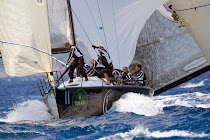


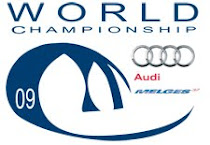
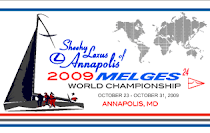

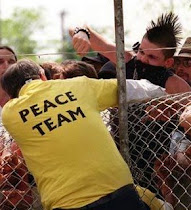
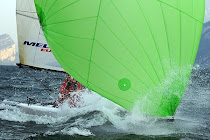
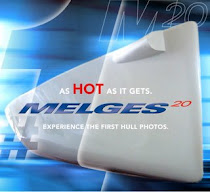

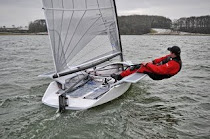


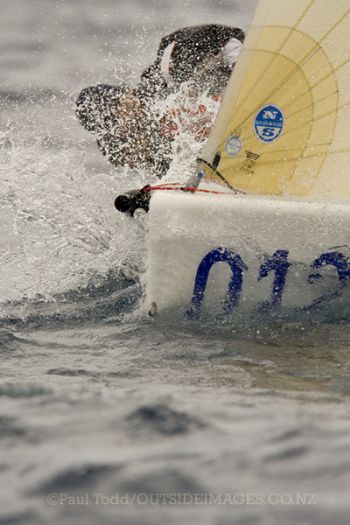
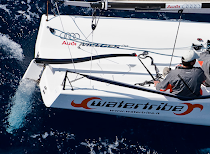



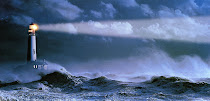




.jpg)




